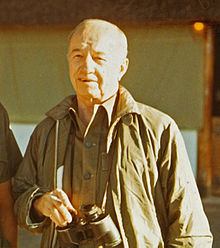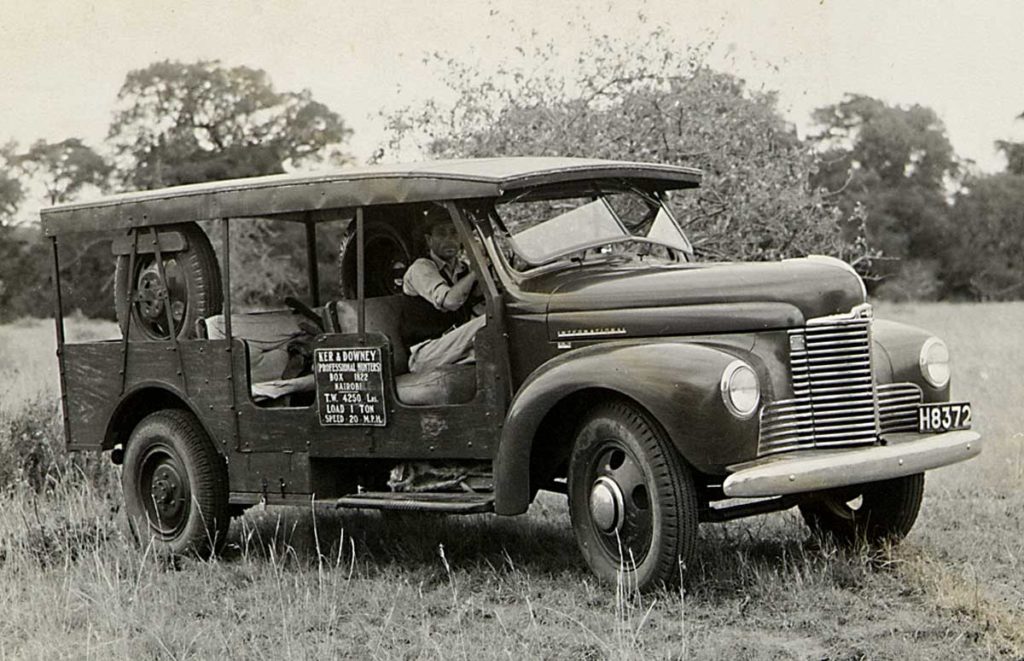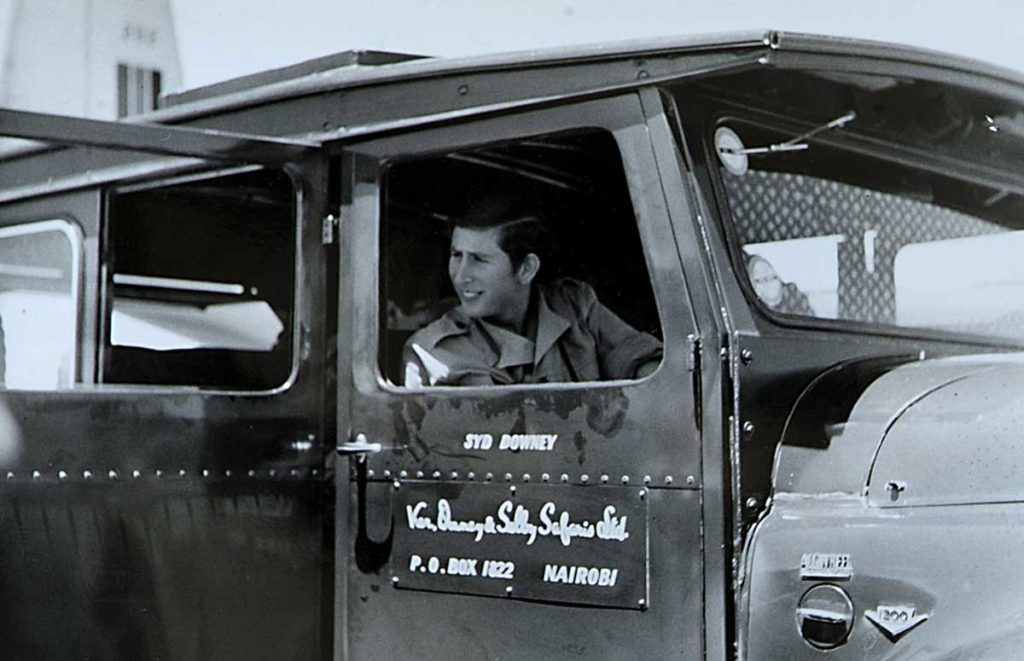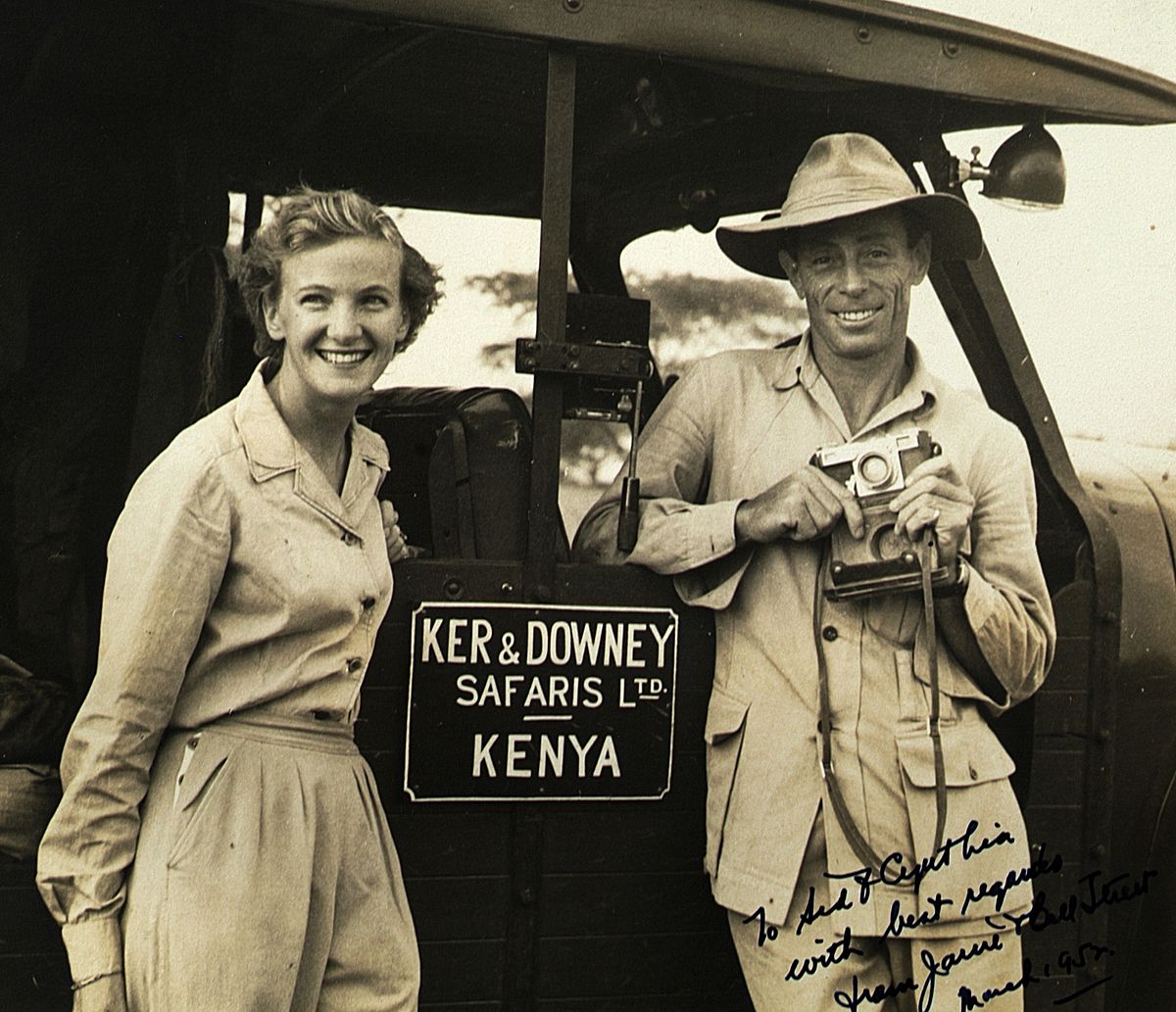Donald Ker & Sydney Downey
The longest-existing safari outfitter in the world
Donald Ker & Sydney Downey
Donald Ker & Syd Downey teamed up to create Ker and Downey Safaris Ltd., a Kenyan company at the forefront of the move away from hunting and towards photographic safaris.
DONALD KER
Donald Ker was a famous Kenyan white hunter, safari guide and conservationist of British descent. Donald Ker was born in England in 1905 and when he was six years old his family moved to a coffee plantation in Kenya (1911). He took to hunting early in his life. When he was eight, Donald’s father taught him to shoot and at 16 he went on his first elephant hunt with Mike Cottar, son of the renowned hunter Charles. Trained by the Cottars in tracking and bush skills, Donald became a ‘learner hunter’ on their epic safaris, which would regularly involve hundreds of porters and camp staff.
In 1928 Donald hunted with Denys Finch-Hatton and the Prince of Wales (later King Edward VIII), and in 1934 he was second hunter to Bror Blixen, whose expedition included George Vanderbilt and the Vicomte de Rochefoucauld. He soon joined the safari company Shaw and Hunter Ltd. It was while he worked for Shaw and Hunter that he first encountered Sydney Downey in the Masai Mara. In the beginning the two hunters developed a feud stemming from an incident when both were in the Mara at the same time, and felt the other’s hunting party was encroaching on theirs. As time passed the hunted together many times. Throughout the 1930s, the two hunters, Ker and Downey, opened up much of the Masai Mara to hunting. Their first paying safari as Ker and Downey Ltd. was outfitting The Macomber Affair, an adaptation of Ernest Hemingway's The Short Happy Life of Francis Macomber.When WWII broke out in 1939 Ker enlisted with British army where he became a scout and partook in campaigns against the Italians in the Ethiopian theater. After the city of Addis Ababa was reclaimed by the British, he met Downey at a bar, and made plans to form their own safari company after the war. Shortly after, they announced their decision during an "impromptu meeting of the East African Professional Hunters" Association.
By the end of the war, Donald’s eyes were already on a future in photographic safaris; as he noted, many of his hunting clients “really came out for a good camping holiday in the bush”. When hunting was banned in Kenya in 1977, Donald adapted easily to the new landscape, wholeheartedly embracing the concept of conserving the animals that had been his life.He is also known for leading two long expeditions with Edgar Monsanto Queeny for the American Museum of Natural History which resulted in the production of several nature documentaries and in Ker's own dedication to conservation.
SYDNEY DOWNEY
Sydney Downey was a British-Kenyan white hunter and safari pioneer. Always known as Syd, he learned the trade of guiding safari hunts from an older generation of white hunters, including his early mentor Philip Percival.
Syd was born in 1905 on an Argentinian ranch where his British father was the manager. It was so large that Syd and his siblings rarely left until they went to school in England in 1914. Syd moved to Africa in 1924, a continent he would leave just three times in his life. He became a professional hunter in 1930 and spent much of his time in the Maasai Mara. He was described as “possibly the greatest hunter after Frederick Selous” – a reputation that earned him an enviable client list of royals, Maharajas and film stars.
Downey was born to a British expatriate family ranching cattle in Argentina. He spent most of his early childhood in Argentina, leaving the country for England to attend secondary school. Upon graduating school he sailed to Kenya, where he found a job working on a coffee plantation outside of Nairobi.
Downey became a professional hunter in 1933 when he joined Leslie Tarlton’s Safariland. In the early days with the company, Downey worked with Philip Percival on several safaris as his "second hunter." Percival quickly became Donwey's mentor. Downey soon met Ronald Ker, another Kenyan hunter with whom he developed a rivalry. During the 1930s Ker and Downey were known for having opened up much of the Masai Mara to hunting. However, both hunters took a break from their trade when World War II broke out in 1939, joining the British effort in East Africa against the Italians.
During World War II Syd joined the intelligence corps, tracking Italian movements into Sudan and Ethiopia, where he was captured and imprisoned. On his release he met Donald Ker and agreed to set up a safari company in Kenya. Syd was always drawn to photographic safaris; when he died in 1983, a friend said that “he would have preferred to be remembered not for his legendary skill with a gun or the immense pleasure he gave so many clients, but for his efforts to conserve wildlife and preserve the beauties of the environment.”
As the war in Africa was winding down the British successfully ousted the Italians from Ethiopia, taking back the city of Addis Ababa. It was at this time that Ker and Downey met again, during an "impromptu meeting of the East African Professional Hunters’ Association," in an Addis Ababa bar. During their meeting Ker pitched Downey on the idea of going into business together as soon as the war ended. When the war ended the pair kept their promises and founded Ker and Downey Safaris. Their first paying safari was The Macomber Affair, starring Gregory Peck and Joan Bennett. They hired some of the most well known East African hunters including Harry Selby.
In fact the company eventually became Ker, Downey and Selby Safaris, as Selby expanded the operation down in Botswana. However the partnership with Selby did not last in the end. Ker and Downey had both been moving away from hunting safaris and towards photographic trips, since neither of them particularly enjoyed killing animals, instead preferring the chase. Downey eventually became just as well known for his conservationism as his hunting.KER & DOWNEY SAFARIS LIMITED
Like so many great ventures, Ker & Downey Safaris was born from a chance encounter. Donald Ker and Syd Downey, two big game hunters from Kenya, had been fighting with the British in Ethiopia shortly before the fall of Addis Ababa in 1941. Syd had just been released by the Italians and was celebrating at a local hotel when he bumped into Donald Ker. With one car and a lot of bravura, the pair made a plan to establish “the best safari company the world has ever known”.
It was not until January 1946 that Syd and Donald, newly discharged from the army, took out their first safari. They were hired to run a camp in the Maasai Mara for the production of The Macomber Affair, the United Artists blockbuster starring Gregory Peck and Joan Bennett. It was the beginning of a long love affair with Hollywood, which would see “K&D” outfit some of the biggest films ever to come out of Africa. In 1962, shortly before Kenya’s Independence, Ker & Downey spread its wings to Botswana, with Harry Selby and a couple of other guides offering safaris in this ‘new’, uncharted corner of Africa. Through the 60s and 70s, the company continued to grow – extending its reach across southern Africa, east to the jungles of Congo, and north into the deserts of Ethiopia and Sudan. By 1977, when hunting was officially banned in Kenya, K&D had transformed itself into the leading provider of customised mobile photographic safaris in Africa.Ker and Downey was eventually created after the war in 1946, making it now the world's longest running safari company. Offshoots of the original company were set up in Tanzania, Botswana and the United States. The original main partners were Jack Block, Sydney Downey (Syd) and Donald Ker. Jack Block who owned the Norfolk and Stanley Hotel, Nairobi was the business brain who saw it as his role to keep Downey and Ker out on safari for as many days as possible. The Botswana operation was set up by new partner Harry Selby (hunter), who joined after the huge success of Robert Ruark's Horn of the Hunter which was based on a safari they took together.
Often credited for leading the move from hunting to photographic safaris out, Ker and Downey is famous for having outfitted many movies - from Out of Africa (film) to Gorillas in the Mist and The Constant Gardener (film). Ker and Downey's first safari, the Macomber Affair had many scenes at Nairobi's oldest hotel, the Stanley Hotel, Nairobi where Ker and Downey had its first offices and was based for many years. Both quiet men, Ker and Downey were nonetheless attractive to both royalty and celebrity. Charles, Prince of Wales and Anne, Princess Royal first saw the Maasai Mara on Ker and Downey safaris, as did Paul Simon, Carrie Fisher and millionaire Constantine Niarchos. Films the company has worked on include Mogambo, with Clark Gable, Ava Gardner and Grace Kelly; King Solomon's Mines with Stewart Granger; The Snows of Kilimanjaro (1952 film) with Gregory Peck, Susan Heyward and Ava Gardner, Hatari! starring John Wayne, Out of Africa (film) with Robert Redford and Meryl Streep. Cry Freedom, Gorillas in the Mist and The Constant Gardener were also outfitted by the Nairobi-based firm. One of Ker's most notable clients was the businessman and naturalist Edgar Monsanto Queeny for whom he led two expeditions also associated with the American Museum of Natural History. Queeny's intent was to audio record and film African wildlife and native culture, and produced several documentaries from the footage he took while with Ker, including Indicator Indicator and the Pagan Sudan. Ker and Queeny also worked hard to record the various sounds that lions make by playing back to the lions other lion and hyena sounds to illicit novel responses. In doing this Ker realized that the practice of playing recorded animal sounds to lions and other game "could be misused in hunting," and upon his return to Nairobi managed to get the Game department to amend the hunting laws banning such practices. This event exemplifies Ker's own growing conservationist tendencies. At that point, he and Downey were already leaning towards photographic safaris. Neither had enjoyed killing animals all that much to begin with, preferring instead the thrill of the chase. In K&D’s 70 years, it has played host to royalty, outfitted camps for Oscar-winning films such as Out of Africa and played crucial roles in conservation initiatives, particularly in Kenya’s Maasai Mara, Amboseli and Tsavo ecosystems. Like other Kenyan safari companies, Ker and Downey is closely involved with conservation, donating time and funds to organisations like Olgulului Olorashi in Amboseli and Koiyaki Group Ranch in the Masai Mara.Other luminaries at K&D over the years:
JOHN SUTTON: One of the ‘greats’ of Africa’s legendary hunter-guides, John Sutton joined Ker & Downey in 1951, and led the company through the heady transition to photographic safaris during the 1970s. Raised on a farm near Nakuru, John spent much of his childhood on the slopes of the Aberdare Mountains, where he became a keen observer of the complex relationship and changing dynamics between wildlife, the land and the people. His insight – widely sought throughout his life – led to a firm conviction that wildlife is a national resource whose proper management is essential to its survival. A council member of the East African Wild Life Society, John worked closely with a wide range of conservation-oriented organisations and was a trustee of the African Wildlife Foundation. Pivotal to the establishment of Ker & Downey’s operations in both Botswana and Tanzania, John’s clients included Prince Charles and Princess Anne, Jimmy Stewart and Laurens van der Post. John worked on many of Hollywood’s classic African films, including Mogambo and Out of Africa, for which he famously ran a tented camp for 340 cast and crew.
DAVID WILLIAMS: David guided his first safari with Syd Downey in 1959, but did not join the company until 1964. Born in Eldoret in western Kenya in 1931, he worked on locust control in the north of Kenya, Saudi Arabia, Eritrea and the Ogaden. Returning to farm in Kenya, he was nominated to the East African Professional Hunters Association in 1960 and hunted in Tanzania and Uganda before joining Ker & Downey. On one of his first K&D assignments, David worked on the film Sammy Going South with Edward G. Robinson. During his long professional career, David led safaris in Kenya, Tanzania, Uganda, Southern Sudan, Zaire and Botswana. His clients included the Greek shipping magnate Stavros Niarchos, the film star Stewart Granger, and the King of Bhutan. In later life, David concentrated on photographic safaris – with a particular interest and affection for the beautiful birdlife of East Africa.
ALLAN EARNSHAW: Allan has been with Ker & Downey Safaris for over 35 years, becoming a director in 1982 and taking over the chairmanship of the company from John Sutton in 1997. Born in Kenya, Allan is the fourthgeneration son of two family lines, one of which arrived in 1896 to build the ‘Lunatic Line’, as the railway from Mombasa to Kisumu would become known. Allan is credited with helping to develop the mobile photographic safari model that is so popular at K&D today. He has led safaris to many of the farthest-flung parts of Africa, including Zakouma National Park in Chad and the Simien Mountains in Ethiopia. But his great love today is conservation, and putting back into the bush what it has given him. Allan has been instrumental in developing Kenya’s wildlife conservancy movement, and sits on the boards of the Maasai Mara Wildlife Conservancies Association and the Kenya Wildlife Conservancies Association. He has also served on the board of the Kenya Wildlife Service, and is the current chairman of the Kenya Wildlife Trust.
Courtesey: Wikipedia and Ker & Downey Safaris
ARTICLES OF INTEREST
On safari with an African legend by Brian Crisp at News.com.au - 2013
Go back to: Leaders in tourism and conservation



